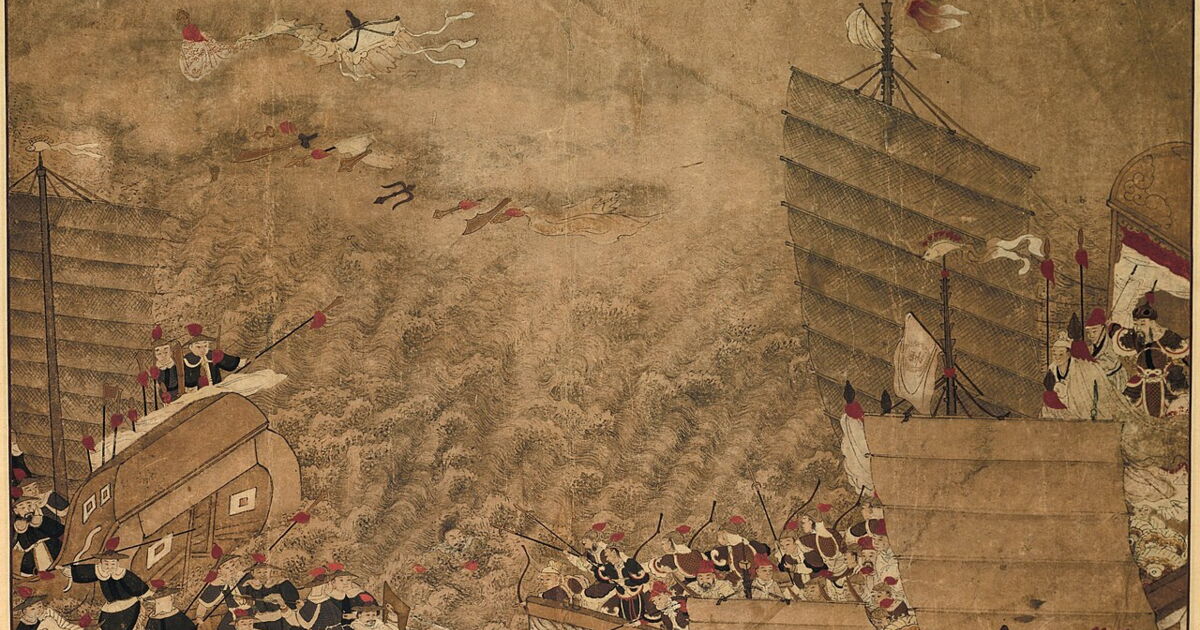Little known in our latitudes, Japanese pirates had nothing to envy their European counterparts in terms of ferocity.
Panic at sea! In 1336, feudal wars broke out on Japanese soil. At the same time, a piracy highly organized which in a few decades will bring a reign of terror along the coasts of Japan, Korea and China. “Although no text makes an official connection, it appears that the initial goal of these attacks was to finance the local lord’s war effort by taking advantage of the lack of diplomatic relations between Korea and Japan,” explains historian Damien Peladan, author of a thesis on the subject.
These marauding sailors of a new type quickly organized themselves into huge fleets – the largest would number nearly five hundred ships – “to take over the naval convoys carrying taxespaid in kind (cereals, ceramics, etc.), from the Korean provinces to the capital Kaesong, and tax convoys that supplied grain from the rich southern provinces to the imperial capital Dadu (Beijing)”, continues the historian.
Wakō, Japanese pirates who raided the Chinese and Korean coasts
Their attacks are not limited to ships since these are Japanese pirates – he called wakô, meaning “Japanese invader”, although the term did not appear until the 18th century – also gleefully plundered villages, monasteries and temples along the coast. They burn down houses, capture men and women and bring back valuable goods in their nets, such as monastery bells or liturgical objects. In a way Vikingsthey even ascended the rivers several tens of kilometers between the 1370s and 1380s.
“At the beginning of the 15th century, the end of the civil conflict in Japan and the re-establishment of diplomatic and thus trade relations with China and Korea gradually changed the situation,” Damien Peladan points out. Some pirates were caught and sent to China, others were offered official positions, which in their eyes was wrong piracy less interesting. In 1419, a famine on the island of Tsushima (pirate base located between Japan and Korea) will launch the final attack by Japanese pirates in Korea and China, which will result in the death of nearly a thousand of them. The beginning of the end of the golden age of these pirates from the East!
FURTHER
books
> A history of pirates, from the South Seas to Hollywood by Jean-Pierre Moreau (ed. Tallandier). Thanks to unpublished documents, the author traces the true history of pirates.
> The Archeology of Piracy in the 17th and 18th Centuries: A Study of the Daily Life of Pirates from the Caribbean Sea to the Indian Ocean under the direction of Jean Soulat. Bringing together 24 international contributions, this work presents the main archaeological sites associated with the Golden Age of Piracy.
> Pirates, privateers and pirates by Alain Blondy (ed. Perrin). In this very detailed study, the academic, known as one of the best experts in the Mediterranean world, traces the history of these skiers at sea.
> Dictionary of corsairs and pirates under the guidance of Gilbert Buti and Philippe Hrodej (ed. CNRS). In 600 entries, this book brings vivid characters to life, from the most colorful, such as Drake, Jean Bart, Surcouf, Duguay-Trouin, Barberousse, to those forgotten by history.
Podcast
> Pirate Queen by Claire Richard (Arte Radio). This podcast, aimed at children, follows the fate of Anne Bonny (born Anne Cormac), an Irish pirate from the 18th century. Proof that there were also women in the filibuster!
You may also be interested in:
⋙ 17.-18. century: the golden age of piracy in the Caribbean
⋙ These terrible pirates have nothing to envy men!
⋙ Do pirates like adventure novels?
